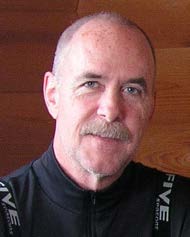From the Editor - October 2015
|
Linguists estimate that there are roughly 3,000 words in the English language that are in common, everyday use. In contrast, my copy of the 1974 edition of the American Geological Institute’s (AGI) Glossary of Geology has about 33,000 entries, and that number has risen to nearly 40,000 in the latest (2011) edition. Is that too many? |
Language is both “a systematic means of communicating by the use of sounds or conventional symbols” and “a system of words used to name things in a particular discipline.”¹ The former definition has an intrinsic objective of effective communication, to ensure as much as possible that a particular concept is understood by the audience in precisely the same way as the person trying to convey the concept. The latter definition of language has no such built-in objective, and it is here that we geologists, just as all scientists, have run into the most trouble at times.
A classic example which illustrates the situation where the proposal of new geological words has gone berserk relates to the term “cactolith,” coined by Hunt et al. in their 1953 USGS Professional Paper 228 entitled Geology and Geography of the Henry Mountains Region, Utah: “The feeder to the Trachyte Mesa laccolith has a distinctive form and some may wish it named. ‘Cactolith’ might be used, and defined as a quasi-horizontal chonolith composed of anastomosing ductoliths whose distal ends curl like a harpolith, thin like a sphenolith, or bulge discordantly like an akmolith or ethmolith.”
For years I thought this was a serious (albeit comic) attempt to add a useful term to the geological lexicon, though I did once hear that Hunt and colleagues wrote this as a mischievous experiment to see if the term would pass the USGS editorial process, which it obviously did. Thus surviving the USGS editors, “cactolith” gained entry into the AGI Glossary, and some years later was even cited in the New Yorker magazine’s “How’s That Again?” column.
As it turns out, Hunt et al. did indeed intentionally propose the term in order to point out the plethora of geologic gobbledygook, at least in the field of igneous petrology. I recently discovered a 1988 publication by Hunt in which he clarified the origin of the name: “It was intended to call attention satirically to the absurd nomenclature geologists were developing by applying new names to the infinite variety of shapes intrusions can form. The name cactolith and its definition started July 1939 at what may be called elegantly a luncheon seminar on an outcrop of that feeder to the Trachyte Mesa laccolith...”
I’m sorry to report that the cactolith, which appears in my copy of the 1974 AGI Glossary, has apparently been declared dead as it was unceremoniously dropped from the 2011 edition. Perhaps it should be revived, not as a widely-used term for describing the zillions of igneous intrusive bodies around the world that look like a particular kind of cactus – but rather for the message it was meant to convey, about the importance of trying to keep our geological jargon as simple as possible. I suppose it could also be defended as having value as a candidate for crossword puzzles. In any case, the curious can visit Hunt et al.’s type locality about ¾ mile southwest of Trachyte Mesa, Garfield Co., Utah, just off State Route 276 about five or six miles south of the junction with State Route 95. I haven’t been there yet, but I’d like to do so someday, to pay my respects (see map on page 9).
I’ll finish up this month’s column with a general comment/opinion and some recommendations about technical writing. In today’s world, where documentation of our technical work is more likely to be done via PowerPoint presentations than traditional written reports, some might say that the importance of the written word has diminished. But I hope that even in PowerPoint presentations, or for that matter email, or social media, the economy of words and precision of written communication will always be important. Furthermore, I believe that geologic writing, when carefully crafted, can even contain an element of inspirational beauty; in this regard, the publications of W.R. Dickinson (e.g. 1974) come to mind, among others.
A couple of resources I’d recommend for helping to simplify and sharpen, if not beautify, our communications are Hansen (1991), and AAPG’s e-symposium Technical Writing Triage (aapg.org/career/training/online/e-symposia) which also incorporates useful tips for assembling effective oral presentations, and even resumes/CV’s. n
¹definitions from Terminology app, version 2.21, ©2012 Agile Tortoise Inc.
Dickinson, W.R., 1974, Plate Tectonics and Sedimentation: SEPM Special Publication No. 22, p. 1-27
Hansen, W.R., 1991, Suggestions to Authors of the Reports of the United States Geological Survey: U.S. Government Printing Office, Washington, http://www.nwrc.usgs.gov/lib/lib_sta.htm
Hunt, C.B., et al., 1953, Geology and geography of the Henry Mountains Region, Utah: USGS Professional Paper 228, U.S. Government Printing Office, Washington
Hunt, C.B., 1988, Geology of the Henry Mountains, as recorded in the notebooks of G.K. Gilbert, 1875-76: Geological Society of America Memoir 167

